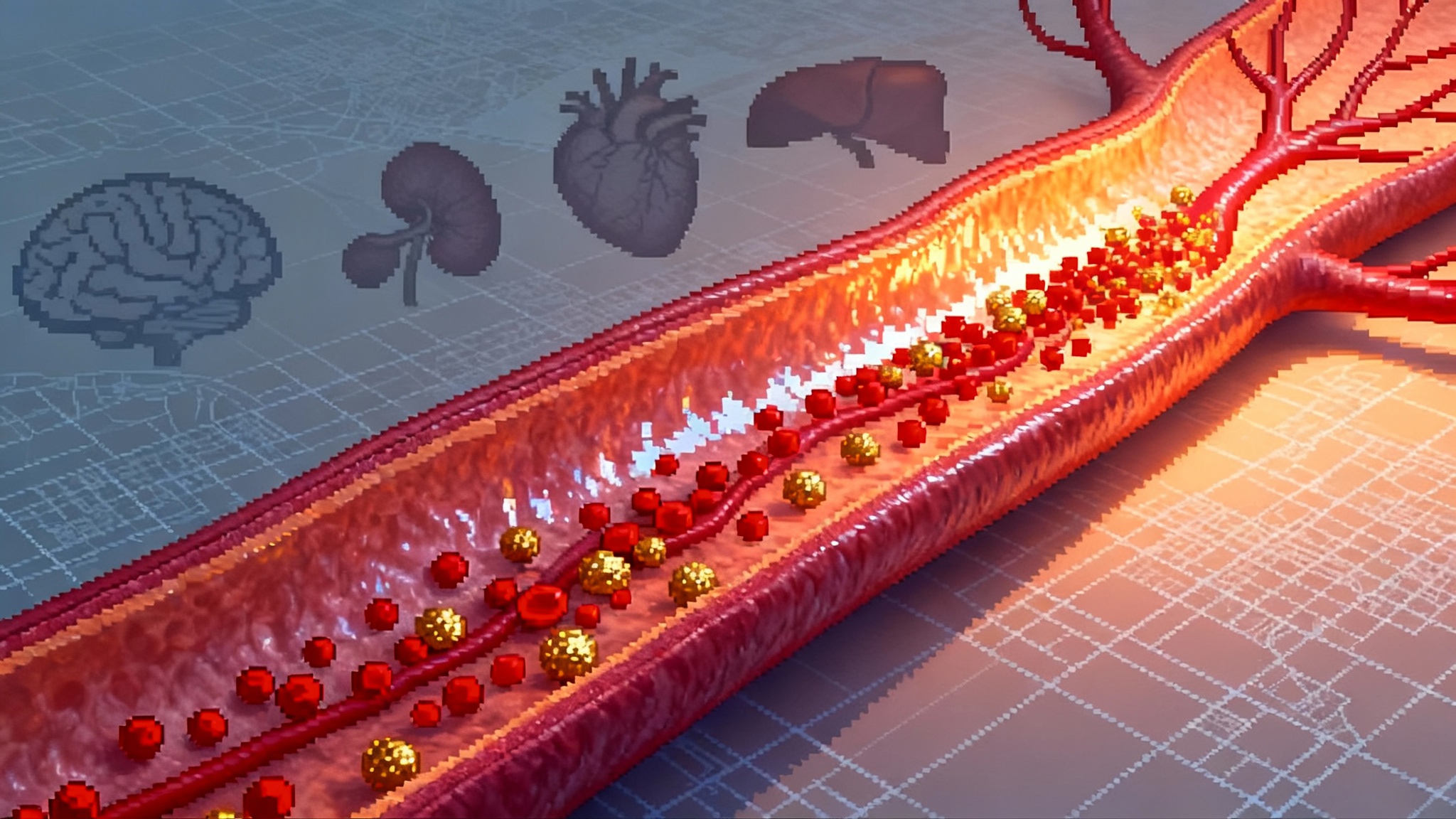Engineered Tregs After the Nobel: Immunity Rejuvenated
October 2025 put regulatory T cells in the spotlight and turned immune rejuvenation from concept to clinical plan. Engineered Treg therapies and thymus regeneration are moving toward trials aimed at infections, inflammaging, and better vaccine responses.

The week immune aging hit the front page
In early October 2025, the Nobel spotlight swung to regulatory T cells, the small population of immune cells that keep the body’s defenses from overheating. Overnight, a long running scientific story became a mainstream health story. If you care about staying healthier for longer, the timing matters. The field has spent a decade making regulatory T cells reliable in people with transplants and autoimmune disease. Now those same tools are being adapted to slow the drift toward immune dysfunction that begins in midlife and accelerates after sixty.
This is not hype for hype’s sake. The emerging programs are concrete, testable, and increasingly well funded. Engineered regulatory T cells are entering efficacy cohorts. Big pharmaceutical partnerships are in place. A new wave of thymus preservation and regeneration strategies is moving from mouse to human studies. The question has shifted from whether we can tune the immune system for healthy aging to how quickly we can prove it, manufacture it at scale, and define endpoints that regulators and payers accept.
A brief primer: what regulatory T cells actually do
Regulatory T cells, often shortened to Tregs after the first letter of the word regulatory, police the immune system’s excesses. Picture a neighborhood watch that tells overexcited patrol cars when to slow down and go home. Without regulatory T cells, inflammation smolders and tissues suffer collateral damage. With them, immune responses become sharper, less noisy, and less likely to turn on the host.
For aging biology, that function matters in three ways:
- It reduces chronic background inflammation, often called inflammaging, that is linked to heart disease, neurodegeneration, and frailty.
- It helps preserve tissue function in places like the gut, liver, and joints where immune overreaction erodes resilience.
- It may improve the quality of vaccine responses by quieting the wrong cells and clearing room for the right ones to expand.
Historically, boosting regulatory T cells was blunt. Low dose interleukin 2 can expand them, but it is nonspecific. The big shift is precision. We can now grow a person’s own regulatory T cells, strengthen their identity, and add a chimeric antigen receptor so they home to a chosen tissue. That last phrase, chimeric antigen receptor, is the same hardware that powers modern cancer cell therapies. Here it is repurposed for calming rather than killing.
The clinical landscape, mapped for aging
The first wave of engineered regulatory T cell programs focused on organ transplant tolerance and autoimmune disease. Those indications gave the field clear targets, clear biomarkers, and a visible safety bar. The second wave broadens the mission to aging. Think of it as reusing a proven chassis for a new route.
- Transplant tolerance programs are providing the playbook. Early clinical experiences with human leukocyte antigen targeted regulatory T cells have shown feasibility, acceptable safety to date, and tissue homing. These lessons transfer directly to aging indications that require tissue localized calming, such as chronic low grade liver, gut, or vascular inflammation.
- Autoimmunity programs are seeding antigen discovery. The know how to find disease relevant antigens in type 1 diabetes, multiple sclerosis, and inflammatory bowel disease is being adapted to pick targets for age associated tissue stress.
- Efficacy cohorts are opening. Several teams are moving from first in human safety to cohorts designed to detect signals on inflammation, infection rates, and vaccine responsiveness in midlife adults.
Names to know on the cell therapy side include pioneers that built the transplant and autoimmunity data sets, along with newer entrants building modular manufacturing lines and programmable receptors. On the drug development side, multiple large pharmaceutical companies have signed collaborations with engineered regulatory T cell startups to co develop therapies for immune mediated disease. Those alliances are now a springboard for aging focused trials that still use the same core technology.
Why tamping down the right inflammation can extend healthspan
Healthy immunity is a balancing act. The aim is not to suppress defenses. The aim is to remove noise so the right signals get through. Three concrete payoffs make engineered regulatory T cells attractive for aging:
-
Fewer and milder infections. As people reach their fifties and sixties, innate immune cells throw more sparks and adaptive immune cells become less discriminating. Calming misfiring cells in tissues like the lung and gut reduces the chronic alarm signals that exhaust the system. Less background alarm means better responses to real threats.
-
Lower chronic inflammation. Continuous low grade inflammation is a risk multiplier for cardiovascular disease, type 2 diabetes, osteoarthritis flare, and neuroinflammation. Regulatory T cells directly release factors that cool the local environment and indirectly train other immune cells to stand down. That translates into fewer inflammatory cascades that chip away at resilience. For a systems view of midlife risk, see our vascular first longevity playbook.
-
Better vaccine responses. Vaccines work best when helpful lymphocytes expand without being crowded out by bystanders. By shrinking the pool of exhausted and misprimed cells in target tissues and lymph nodes, regulatory T cells can improve seroconversion rates, breadth of response, and durability of protection. The goal is not higher antibody levels at all costs. It is a higher quality response matched to the pathogen.
The key is precision. Engineered regulatory T cells can be designed to localize to tissues and antigens associated with age related inflammation, rather than blanketing the whole body. That specificity minimizes the risk of blunting necessary immune responses elsewhere.
The thymus returns to center stage
If engineered regulatory T cells are the firefighters, the thymus is the academy that trains new recruits. The thymus shrinks steadily after puberty. By midlife it is a fraction of its adolescent mass. That shrinkage means fewer new naive T cells enter the circulation each year. Over time, the repertoire narrows and makes it harder to recognize novel pathogens.
Three categories of thymus strategies are advancing in parallel:
- Preservation and reawakening. Temporary sex hormone modulation can increase thymic output in adults. This approach is being refined with careful dosing schedules to preserve bone, mood, and metabolic health while nudging the thymus. Interleukin 7 and growth hormone based regimens aim to raise thymic export without long term endocrine disruption.
- Regeneration and replacement. Engineered thymic epithelial cells, the specialized instructors of T cells, are being manufactured from pluripotent stem cells. The vision is to implant a small, functional thymic unit that safely increases naive T cell output. Researchers are also exploring delivery of the transcription factor FOXN1 to rebuild thymic architecture.
- Ectopic scaffolding. Groups are testing whether a thymus like structure can be grown in a safe niche using tissue engineering, enabling a controlled, monitorable source of new T cells without major surgery.
These approaches dovetail with regulatory T cell therapy. A better thymus produces a broader, more competent pool of T cells, including new regulatory T cells. Engineered regulatory T cells reduce collateral damage while the thymus rebuilds capacity. Together, they offer a way to tackle both the quantity and the quality of immunity in aging.
What the first aging focused trials will measure
Aging is not a single disease, which makes trial design tricky. The fix is to choose endpoints that are clinically meaningful, biologically grounded, and measurable within one to two years. Expect early studies to mix mechanistic biomarkers with functional outcomes. For measurement details, see our trial grade biomarker playbook.
Mechanistic biomarkers to watch:
- T cell receptor repertoire diversity, measured by sequencing to track whether the pool of T cells becomes more varied over time.
- Thymic output, tracked by T cell receptor excision circles in naive T cells.
- Regulatory T cell stability, assessed by the demethylation status of the key identity region and by expression of defining transcription factors.
- Inflammaging markers such as interleukin 6, C reactive protein, and tumor necrosis factor, with an emphasis on sustained change rather than one time dips.
Functional outcomes that matter to patients and payers:
- Rate of clinically significant infections per person year, including respiratory and urinary tract infections. The goal is fewer episodes and faster recovery.
- Vaccine response quality in midlife and older adults, combining neutralizing antibody titers with T cell response breadth and durability at six and twelve months.
- Tissue specific readouts tied to the engineered regulatory T cell target, such as liver enzymes for metabolic inflammation or stool calprotectin for gut inflammation.
- Mobility and frailty indices when inflammation contributes to sarcopenia or joint flare.
Regulators will ask about durability. Early trials will likely include retreatment cohorts to test whether repeat dosing is safe and whether benefits accumulate. That design acknowledges a simple fact about aging interventions. We are not looking for one and done cures. We are building maintainable programs that fit into annual health routines.
Manufacturing at scale without losing the magic
The hardest part of cell therapy is not invention. It is building factories that turn out consistent, affordable products. Engineered regulatory T cells bring a familiar set of challenges with aging specific wrinkles.
- Autologous versus allogeneic. Autologous means using a person’s own cells. It avoids rejection but requires customized manufacturing runs. Allogeneic means banked cells from a donor, which is faster to deliver but requires gene edits or immune cloaking to avoid rejection. In older adults with comorbidities, autologous collections can be harder. Hybrid strategies are in development, such as starting with donor cells engineered to be less visible to the host immune system.
- Identity and potency. Regulatory T cells must stay regulatory. Release tests that measure the demethylation signature of the regulatory program and the ability to suppress inflammatory responses are being hardened into lot release standards.
- Homing and persistence. Regulatory T cells need to reach the right tissue and remain long enough to retrain the local immune environment without overshooting. That means engineering chemokine receptors for homing, tuning the signaling strength of the chimeric antigen receptor, and exploring safety switches that can be activated if cells linger too long.
- Cryopreservation and logistics. To serve an aging population, cell products must be stable during shipping and storage. Teams are optimizing cryoprotectants, bag formats, and thaw protocols that can be delivered in community settings without a research hospital footprint.
Expect more automation. Closed systems that combine selection, activation, gene transfer, and harvest reduce cost and contamination risk. That is how the field delivers thousands of doses per year rather than dozens.
Business models grow up
The business side has matured quickly. Early alliances with large pharmaceutical companies provided capital, manufacturing muscle, and regulatory experience. Those deals are now evolving into co development plans that include aging focused indications alongside autoimmunity. The rationale is straightforward. If the technology is safe in transplant and autoimmune patients, midlife prevention cohorts with lighter inflammatory burdens could be lower risk. Pairing engineered regulatory T cells with vaccines or anti inflammatory small molecules creates combination products with clear commercial paths. We have outlined how to convert bold claims into measurable endpoints in our guide to turning hype into testable biology.
Pay attention to how milestones are structured. When partners tie milestones to biomarker shifts that are upstream of clinical outcomes, programs move faster. When milestones hinge on real world outcomes like reduced infections or fewer hospitalizations for inflammatory flares, programs build payer confidence. The best deals balance both.
What could go wrong, and how to fix it
Three hurdles stand between promise and practice.
-
Durable engraftment without drift. Regulatory T cells must hold their identity in inflamed tissues. Solutions include building in genetic circuits that stabilize the regulatory program, using genomic safe harbor sites for receptor insertion, and equipping cells with safety switches.
-
Scalable manufacturing for older adults. Collections from older donors can yield fewer high quality cells. Solutions include improved selection protocols, short ex vivo culture times to preserve stem like qualities, and allogeneic sources for patients who cannot provide enough cells.
-
Endpoints that capture aging biology. A trial can succeed biologically but fail statistically if it asks the wrong question. Solutions include composite endpoints that combine infection rates, vaccine responses, and inflammatory markers, and enrichment strategies that select participants with clear evidence of immune aging such as low thymic output or contracted T cell diversity.
The near term roadmap
The next thirty six months will show whether immune rejuvenation using engineered regulatory T cells and thymus rebuilding becomes a standard part of midlife medicine.
- Next 12 months. Look for readouts from efficacy cohorts that report infection rates, vaccine response quality, and tissue specific inflammation measures. Watch for first in human data from thymic epithelial cell implants or gene therapy attempts to restore thymic architecture. Expect at least one additional large pharmaceutical partnership dedicated to healthy aging indications.
- Months 12 to 24. If early signals hold, trials will expand and begin testing repeat dosing schedules. Combination studies that pair regulatory T cells with vaccines or anti inflammatory agents will launch. Manufacturing plants optimized for regulatory T cells will come online with automated, closed systems.
- Months 24 to 36. Pivotal trial designs will take shape, likely starting in high risk midlife populations with clear inflammatory comorbidities. Regulators will formalize guidance on endpoints and safety monitoring tailored to aging biology. Payers will begin modeling premium reductions tied to infection rate drops and fewer hospital days.
What to do now if you are a clinician, regulator, or investor
- Clinicians. Build a baseline. Start tracking thymic output, T cell receptor diversity, and quality of vaccine responses in at risk midlife patients. Refer eligible patients into early trials. Prepare infusion workflows and monitoring protocols that community centers can handle.
- Regulators. Encourage adaptive designs with interim biomarker analyses linked to moving into larger cohorts. Clarify how composite endpoints that blend mechanistic and functional measures will be judged. Align safety monitoring across trials so signals can be compared.
- Investors. Fund factories and endpoints. The winning edge will be manufacturing quality and trial designs that show meaningful outcomes in one to two years. Back companies that can produce consistent lots, measure the right things, and recruit the right populations.
The bottom line
October 2025 may be remembered as the month immune aging entered an engineering era. Regulatory T cells give developers a programmable tool to calm harmful inflammation without dulling defenses. Thymus strategies restore the training ground that aging erodes. The combination opens a credible path to fewer infections, lower chronic inflammation, and better vaccine responses in midlife and beyond. That is not a slogan. It is a set of experiments now underway, with decisions about manufacturing and endpoints that will determine how quickly they reach clinics. If the data cooperate, immune rejuvenation will not be a speculative add on. It will be part of the annual health plan, delivered with the same practicality as a flu shot, and just as quietly life extending.




